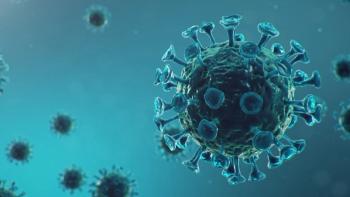
How to Achieve Endemic Status Amid COVID-19 Prevalence
Mitchel Rothholz, RPh, MBA, and Jeff Goad, PharmD, MPH, share insights regarding COVID-19 potentially achieving endemic status.
Episodes in this series

Mitchel Rothholz, RPh, MBA: Hello, and welcome to this Drug Tropics® K-Cast titled “Exploring the Continued Need for COVID-19 Vaccines and Boosters.” My name is Mitch Rothholz. I’m a pharmacist and immunization consultant from Harleysville, Pennsylvania, and I’ve been working in the area of immunizations to advance pharmacists’ role for more than 26 years. Joining me on this program is Dr Jeff Goad, the associate dean of academic affairs at Chapman University School of Pharmacy in Irvine, California. Dr Goad is the president-elect of the National Foundation for Infectious Diseases, known as NFID, and has maintained a practice focused on travel health and immunization services for more than 20 years. Jeff, welcome, and thank you for joining me.
One thing we hear in the media is the term endemic. Jeff, is that something we consider as part of this process of the evolution of the COVID-19 virus? Tell us a little more about what endemic is and how it compares with the term pandemic.
Jeff Goad, PharmD, MPH: A lot of these terms get thrown around, but they have some actual definitions behind them. Sometimes we’ll say there’s an epidemic of obesity or a disease is endemic, but there are definitions behind it that we use for COVID-19 that are helpful to understand where we are. There’s endemic, epidemic, and pandemic. Endemic is when the CDC [Centers for Disease Control and Prevention] says it’s a constant presence or a usual prevalence of a disease or an infectious agent in a population within a geographic area. We have diseases that are still endemic to the United States, such as the common cold and varicella.
A step up from that, if you have a sudden surge in cases within a state or within the United States above what you would expect for that disease, then you might have an epidemic. Epidemics are usually confined to smaller geographic areas. If that epidemic goes worldwide and begins to cross international borders, then it’s a pandemic. For example, the COVID-19 pandemic was declared by the WHO [World Health Organization]. You need a worldwide body to say that this has reached a significant number of countries and is considered a pandemic. Originally, the goal was to get rid of COVID-19, but the goalposts have shifted a little. We’d be happy with getting into an endemic phase, which is a low level and manageable. It isn’t overwhelming our hospitals, and people are able to manage the disease and prepare for it with immunization.
Mitchel Rothholz, RPh, MBA: We always hope for getting rid of the virus, but in an endemic, it’s still going to be there. Is this similar to what we’re seeing with flu every year, where it’s still there and we have it under control?
Jeff Goad, PharmD, MPH: Yes. Influenza is an interesting case of endemicity because it moves from the Northern to the Southern Hemisphere. There’s probably low-level disease throughout the country, but we shut down many of our detection sites. We may not be picking up on it. A lot of that had to do with travel from the Southern Hemisphere to the Northern Hemisphere, so it’s very predictable. It fits that classic definition from the CDC as a predictable prevalence of disease that you see at a regular interval. For us in the United States and in the Northern Hemisphere, for the flu, that’s our fall and winter time.
Mitchel Rothholz, RPh, MBA: To get control of the virus, what are some things that we’re trying to accomplish globally?
Jeff Goad, PharmD, MPH: Early on in the pandemic, we talked more about not getting infection and avoiding leaving home. As the pandemic evolved, and as our knowledge of what this virus was doing evolved, we learned different strategies along the way. The strategies going forward to manage this disease are similar to the way we manage influenza. Vaccination is No. 1. The rates of hospitalization and death are dramatically less when you’re vaccinated. As with influenza, as we add that extra dose every fall or winter to [people] 6 months and older, we help restore the immune response that people had from the previous season to be able to respond to the new influenza variants. We’d call them subtle drift in the hemagglutinin and neuraminidase on that virus that our vaccines have to be able to accommodate.
We’re seeing a similar trend in COVID-19. That isn’t to say they’re the same disease. We don’t even know whether they’re going to co-circulate. We don’t have enough experience with COVID-19 to say that it’s now a wintertime disease, like the flu. We’ve seen surges in December and January, but we don’t know whether that’s the predictable pattern. We have to remain vigilant throughout the year and not just think it’s a flu, which is what people thought it would be originally.
Transcript edited for clarity.
Newsletter
Pharmacy practice is always changing. Stay ahead of the curve with the Drug Topics newsletter and get the latest drug information, industry trends, and patient care tips.
















































































































